What is a zen garden? This Japanese approach to design can turn backyards into calming sanctuaries
Japenese zen gardens are both calming and inspiring, adding a sense of verdant tranquility to any outdoor space
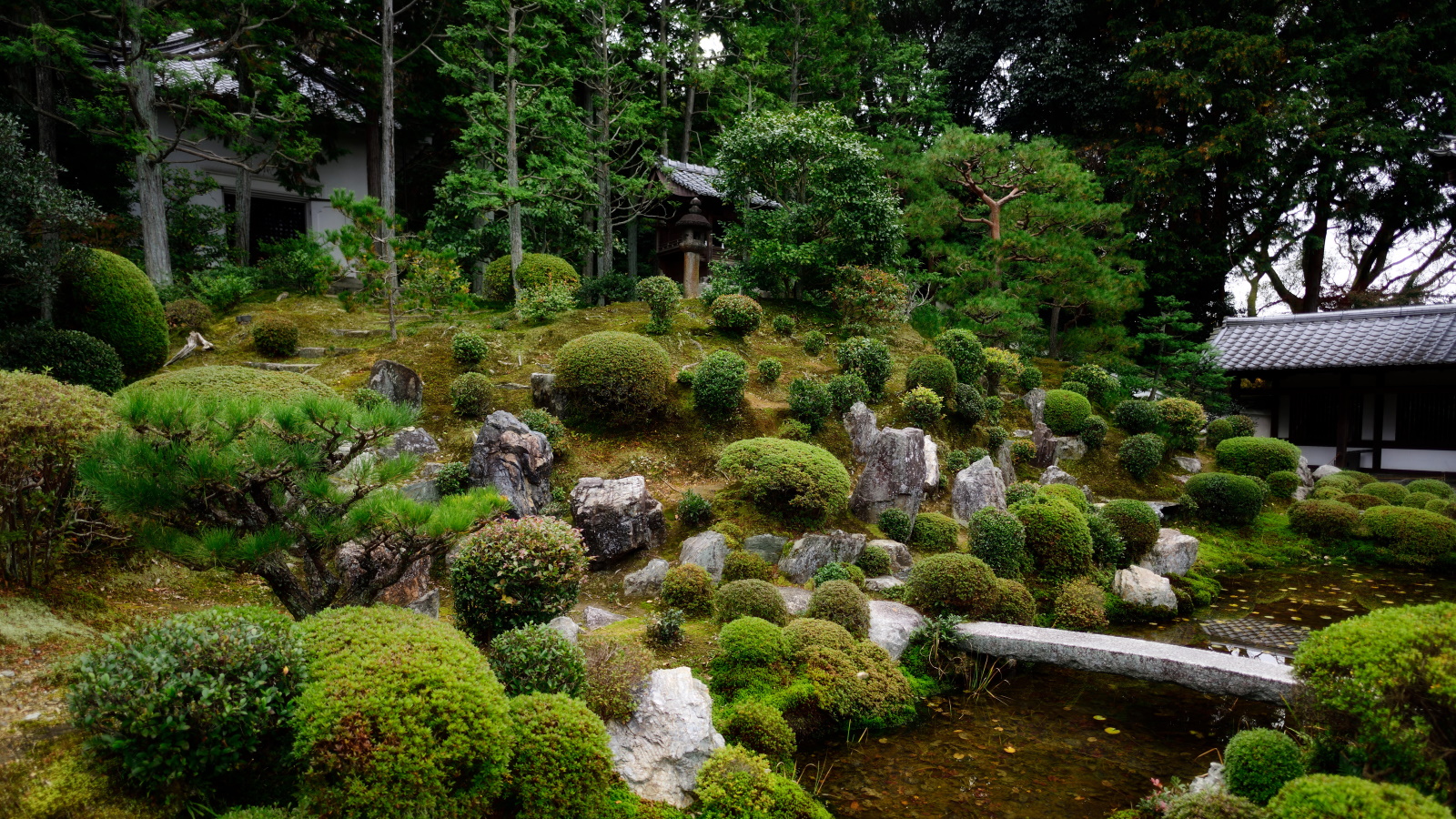

Japanese zen gardens are minimalist and meditative spaces designed to evoke a sense of peace and serenity. Originating from Zen Buddhism, this ancient approach to landscape design has existed for over a millennia.
Incorporating natural materials, enclosed spaces are kept simplistic in terms of garden design, the focus being on creating a garden, with crisp hard landscaping punctuated by green flora.
Put simply, a zen garden typically consists of carefully arranged materials, such as rocks and gravel, often planted with moss or evergreen shrubs. Each element holds symbolic meaning, with boulders supposed to represent mountains, moss symbolizing vast plains and raked gravel patterns considered rippling water.
Visitors to zen gardens are encouraged to stop and slow down, appreciating the beauty and complexity of the natural world. These spaces are meticulously maintained by gardeners, with gravel and sand raking a daily and even hourly process.
This impressive commitment to garden maintenance, however, is not done purely for aesthetic reasons. Indeed, it serves a higher purpose, encouraging those who work and visit the zen garden to consider their surroundings and enjoy quiet contemplation. This mindful approach to gardening, it seems to me, is as important today as it has ever been.
Elements of zen gardening can be incorporated into backyards, helping to create a calming and meditative space. Read on to discover more about how you can take inspiration from zen gardens.
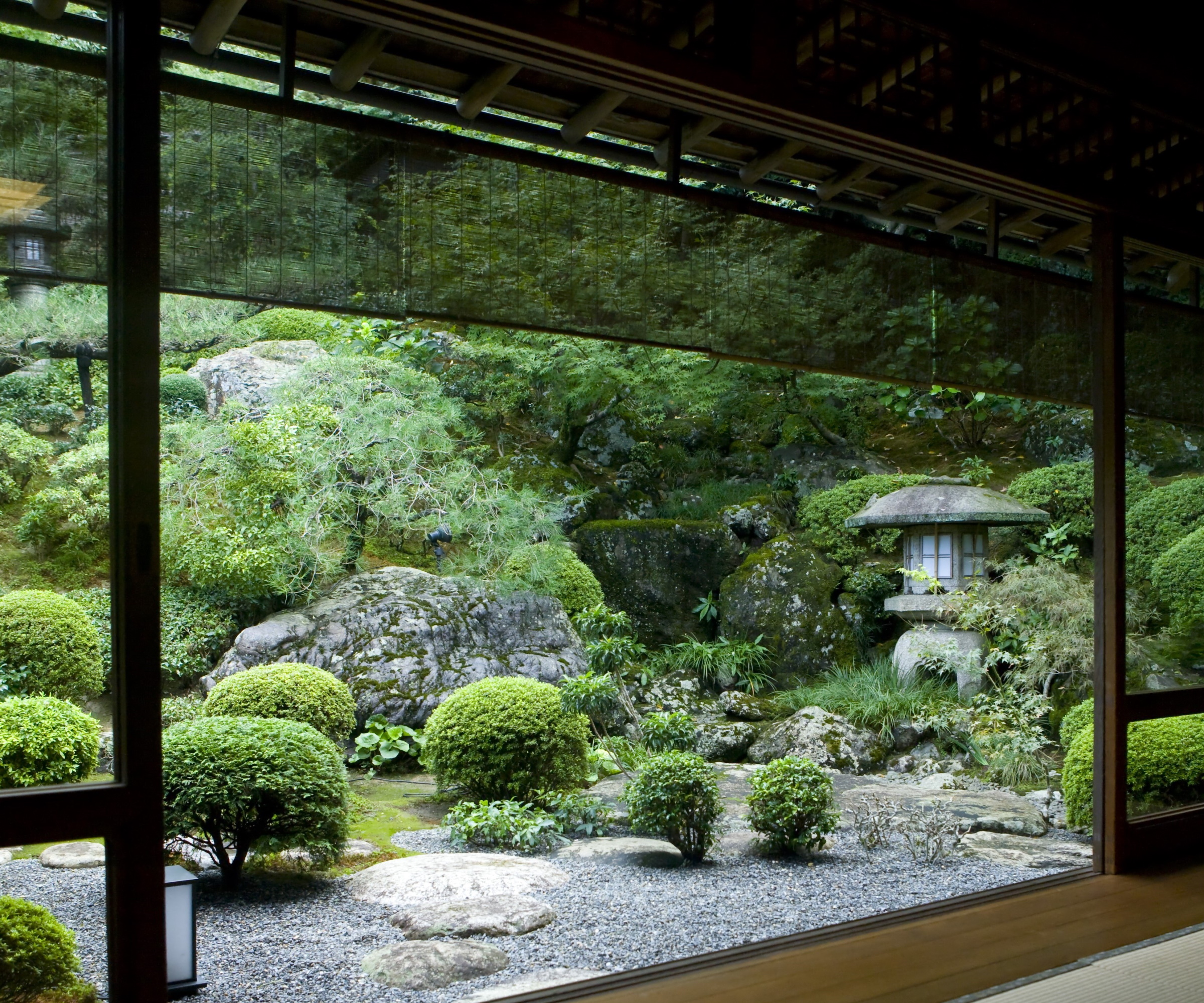
What is a zen garden?
Zen gardens have existed for over one thousand years, but remain as beautiful and fascinating today as ever. Elements of Japanese zen gardens can be incorporated into both large and small outdoor spaces, encouraging garden owners to stop and slow down.
The fundamentals of zen gardens
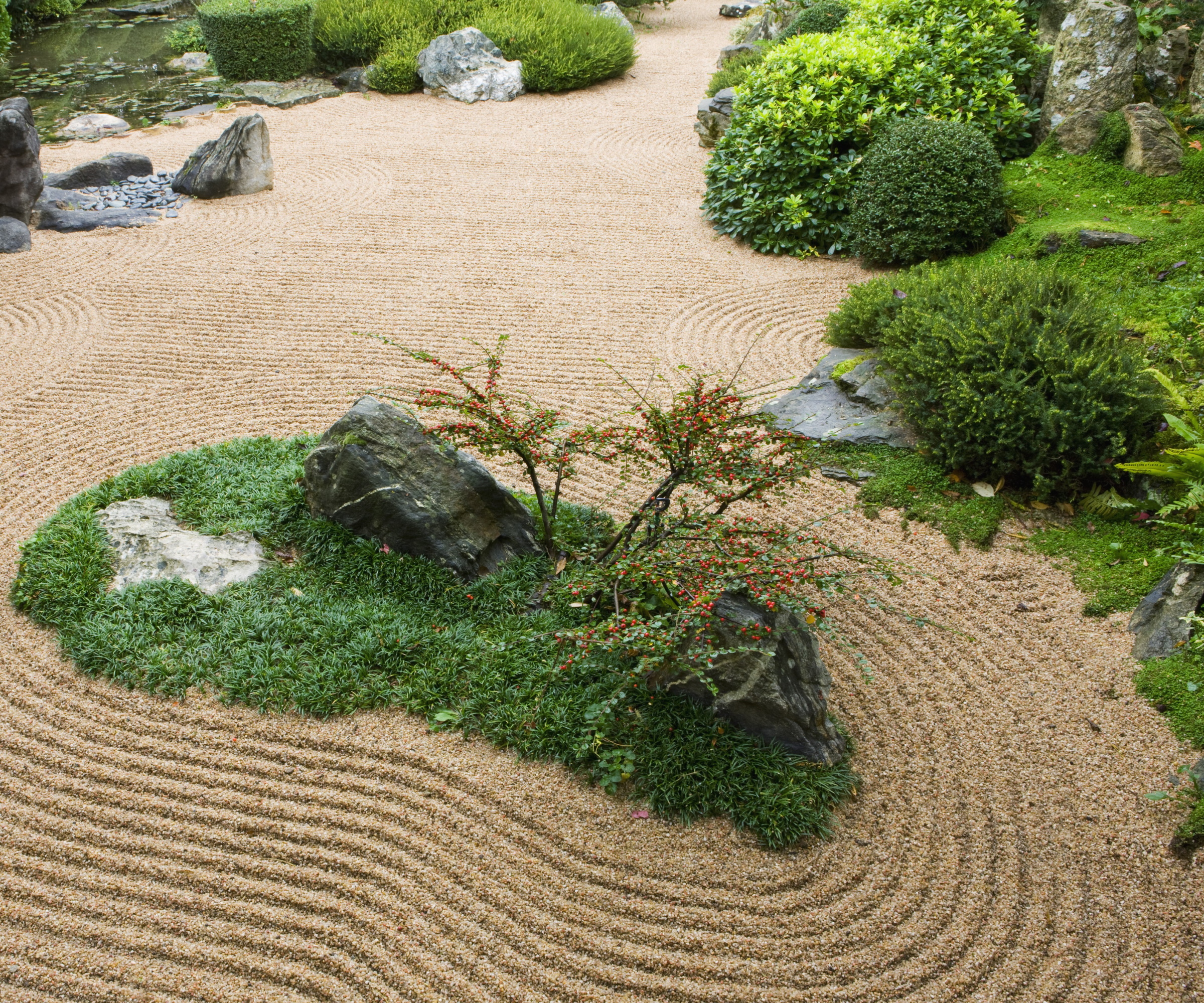
A traditional zen garden is best described as a minimalist landscape 'with three key elements,' says Mary Sramek, Director of the Earl Burns Miller Japanese Garden. 'Stone, which forms the structure of the garden, water, representing a life-giving force, and plants, which provide the color and change throughout the seasons,' Mary continues.
Zen gardens are based on several guiding principles, rooted in Zen Buddhist teachings, notably austerity, or koko, simplicity, kanso, naturalness, shinzen and stillness, seijaku. These guiding principles impact how stone, water and flora are used in zen gardens.
Importantly, the design is always considered, with the aim being to tell a story, reference a natural wonder or symbolize a concept. Zen gardens show masterly craft and precision, and whilst these spaces teach the importance of connecting with the natural world, nature itself is often mimicked and controlled. Ponds, for example, represent oceans, raked gravel is thought of as rippling, flowing water, and boulders appear as unclimbable mountains.
'Our garden has many stone elements, including two koma-inu, or lion dogs, at the inner courtyard entrance,' Mary says. 'The koi pond takes up most of our beautiful 1.3 acres, and the plant life is carefully curated by our master gardeners, the artists of our living museum,' Mary continues.
The garden is 'bordered by three hedges, all of various heights and colors,' Mary says. 'This gives depth and dimension to the space. The trees directly behind the hedges, beyond the garden, add to the illusion of a larger space.'

Mary is the director of the Earl Burns Miller Japanese Garden, she combines her love of horticulture, educational programming, and public administration. Under Mary’s leadership, the College of Health and Human Services will focus on five academic strategic priorities: Preservation, visibility, education, art and culture, and health and wellness.
Drawing on inspiration from zen gardens for your backyard
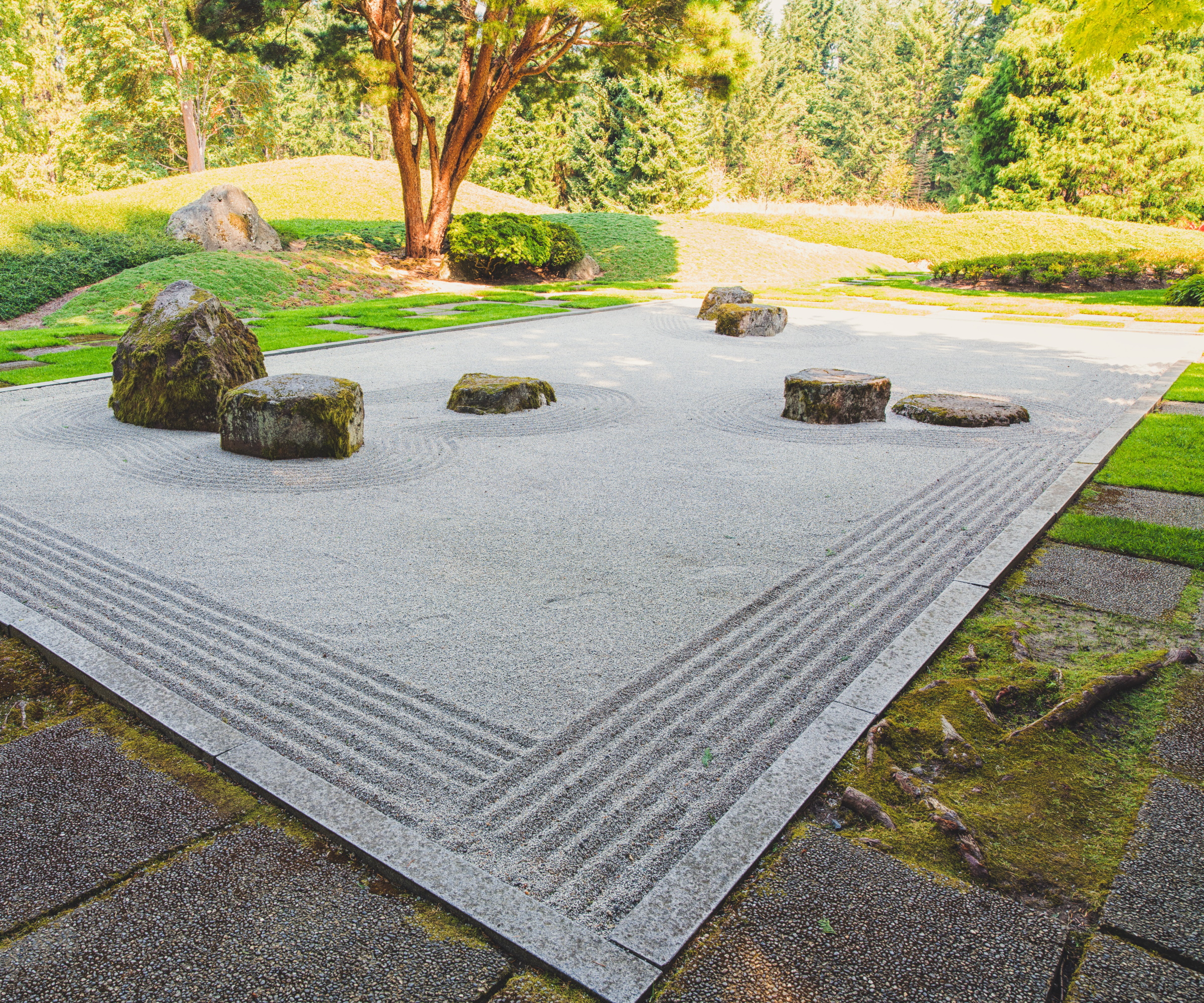
'Japanese gardens are inspired by the human connection to nature,' says Tim Gurner, Garden Curator of the Anderson Japanese Gardens, Illinois.
The same principles can be used in even the smallest of backyards, with the objective of zen gardening being to 'activate all our senses in a thoughtful way, allowing an opportunity for receptivity and insight,' Tim continues.
Even a small rockery in the yard or one carefully positioned boulder will force passersby to stop and admire, taking note of something you might otherwise have walked by.
If you are interested in zen gardening and this mindful approach to garden design, Tim recommends that you 'tour gardens, paying special attention to the way the elements work together as you move through the space.'
'Japanese gardens connect the indoor and outdoor living spaces into one cohesive unit,' Tim continues. 'Invite the outside in, designing so the views of the garden feel like a connection between nature and your indoor living space.' Indeed, consider what shrubs, trees and flowers are visible from the home when planting in your yard, the aim being to entice you out into nature.
Tim also advises paying attention 'to the way plants grow along streams, in forests, steep wooded slopes, meadows and mountains.'
Anderson Japanese Gardens has numerous areas inspired by Japanese zen gardens, with 'several raked gravel gardens known as karesansui, and a large contemporary garden strongly influenced by Japanese style, known as the Garden of Reflection,' Tim says. 'The garden also includes excellent examples of traditional architecture built by master craftsmen from Japan.'
Whilst architecture and sculpture from master craftspeople of Japan might not be an option for many of us, using the key components of a Japanese garden, that Tim references, can help to create a look inspired by zen gardening. Using natural stones and gravel is a good start, as is using a wide variety of plants such as pines and maples that are visible from the home.
It is recommended to carefully position a seat or bench somewhere in the yard that looks not back at the home, but gazing out to nature, so as to calm and inspire.
Finally, incorporating water in the yard, even a small water feature, can enhance the sensory experience of the yard, with flowing or trickling water a naturally calming sound.

Tim has worked and studied at Anderson Japanese Gardens since 1989, and is currently Garden Curator, under the direction of Mr. Hoichi Kurisu, of Kurisu International. Tim is a frequent contributor to Sukiya Living Magazine and has presented at national and regional conferences for the North American Japanese Garden Association, of which he is a member of the board of directors.
Planting ideas for zen gardening
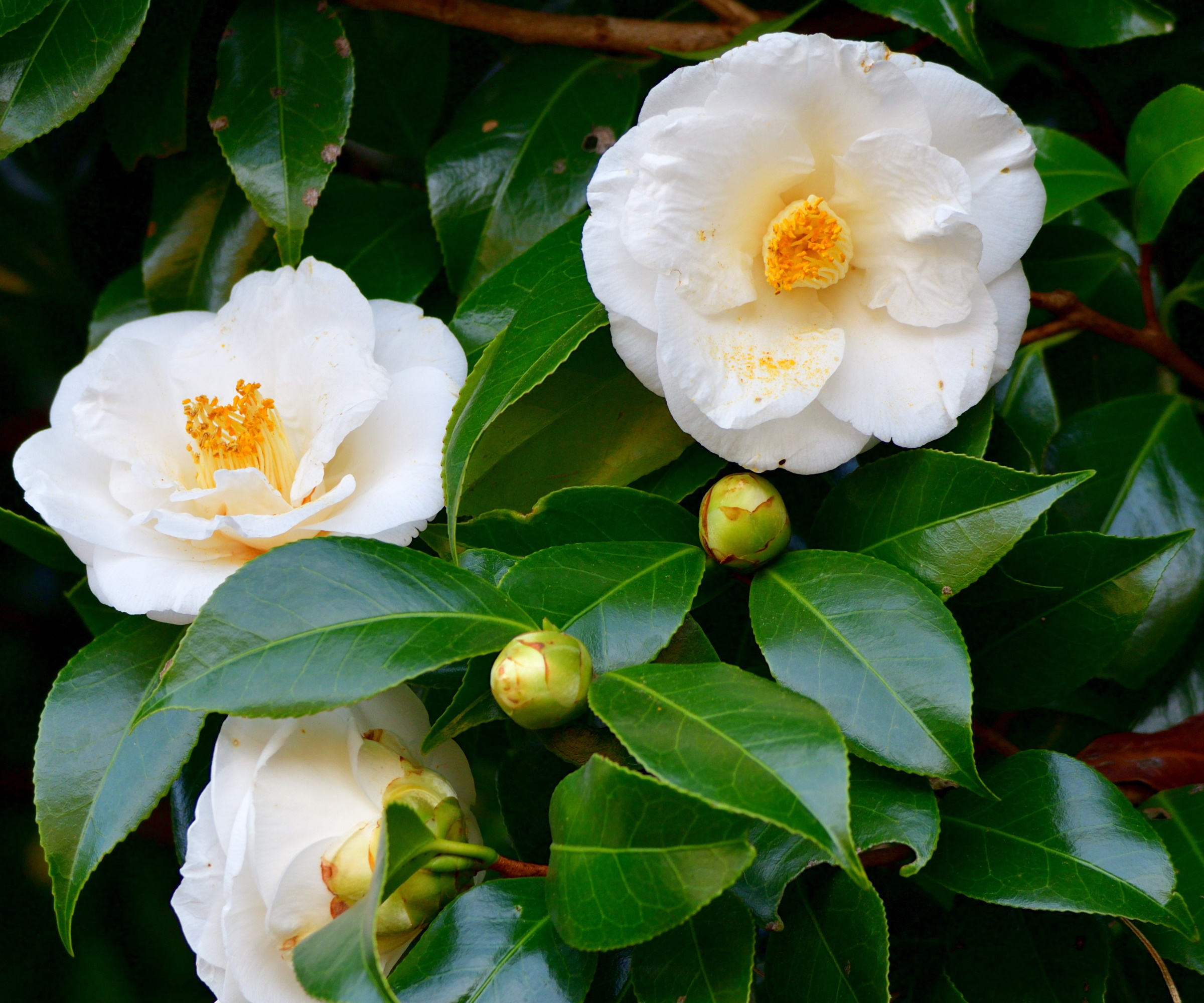
'If you are looking to add color and structure to your Japanese-style garden, look no further than camellias,' Terry Huang, plant expert and Director of Living Collections at South Coast Botanic Garden in the Los Angeles area.
'For a classic choice, Camellia japonica and its hybrids come in a range of floral forms and colors that suit everyone's taste. Plants can begin blooming in late winter and continue into spring, providing much-needed color during the colder times of the year,' Terry says.
'When out of bloom, camellias provide year-round structure and interest with their smooth bark and lustrous, evergreen leaves,' Terry continues. 'They are happiest in woodland conditions where the soil is rich and moist, and light is strong, but not scorching.'
Incorporating dwarf pine specimens is also a good option, particularly for those considering a dry, gravel garden. Pinus mugo is both compact and evergreen, adding texture with its attractive pine needles, and is often seen as part of Japanese-inspired gardens and outdoor spaces.
Japanese maple trees, or acers, are also an elegant choice for smaller yards. These deciduous trees are particularly good for introducing colored foliage into the garden, often seen in crimson reds.
'The Japanese water iris, Iris ensata, is another lovely plant that is a perfect subject in a Japanese-style garden,' Terry says. This water plant is happiest in rich, damp soil, growing along the water's edge. It is a 'beloved plant in Japanese culture, and has been selected since ancient times resulting in many forms and colors today ranging from white to purple to pink,' Terry says. 'Full sun is a must for the water iris, for best flower production.'

Terry Huang is the Director of Living Collections at South Coast Botanic Garden in the Los Angeles area. He loves to share his passion for plants by finding creative ways to make botany and horticulture fun and accessible for all.
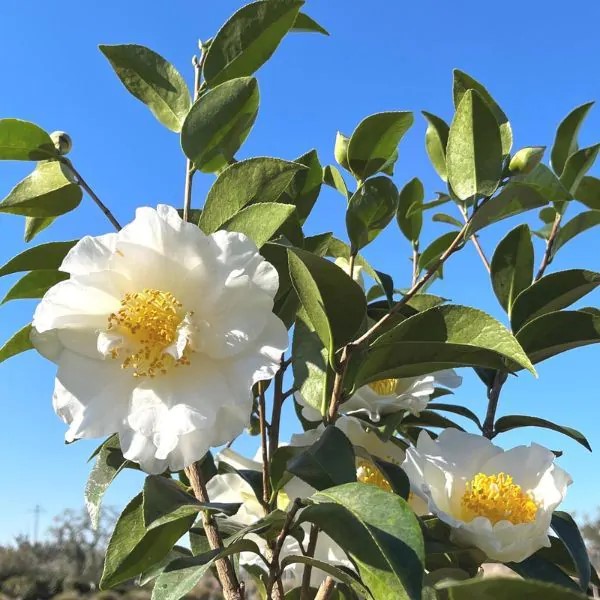
With shining white petals, Camellia japonica 'Silver Waves' will brighten any partial shade garden with silvery semi-double blooms and a bullseye of bright yellow stamens. These are broad-leaved evergreen shrubs, hardy in zones 7 - 9, with glossy, deep green foliage.
FAQs
What trees will help to create a look inspired by Japanese zen gardens?
Planting a Japanese maple tree, or acer, is a great option for those seeking to create a zen garden. In addition, flowering cherry trees are known for their blossom in Japan, and will grow well in a variety of situations. Finally, any topiary is recommended, and specimen pine trees can often be clipped and pruned in attractive and unique shapes often seen in zen gardens.
Whilst large koi ponds and raked gravel gardens might not be an option for many gardeners, incorporating small elements found in zen gardens, such as boulders, water features or topiaries can help to create a calming space. Landscaping with rocks is certainly one way to create a Japanese-inspired look in your outdoor space, drawing inspiration from zen gardens.
Sign up to the Homes & Gardens newsletter
Design expertise in your inbox – from inspiring decorating ideas and beautiful celebrity homes to practical gardening advice and shopping round-ups.

Thomas is a Content Editor within the Gardens Team at Homes and Gardens. He has worked as a professional gardener for both public spaces and private estates, specializing in productive gardening, growing food and flowers. Trained in Horticulture at the Garden Museum, he has written on gardening and garden history for various publications, including The English Garden, Gardens Illustrated, Hortus, The London Gardener and Bloom. He has co-authored a Lonely Planet travel book, The Tree Atlas, due out in 2024.
-
 How to clean a patio – 6 different methods, and when you must use a chemical cleaning agent
How to clean a patio – 6 different methods, and when you must use a chemical cleaning agentFrom manual scrubbing, natural solutions or calling in the pros, industry experts reveal the benefits and considerations of each method
By Andy van Terheyden Published
-
 Kris Jenner's favorite air fryer, the Ninja Crispi, is the perfect small kitchen solution – it deserves a place on the most compact of countertops
Kris Jenner's favorite air fryer, the Ninja Crispi, is the perfect small kitchen solution – it deserves a place on the most compact of countertopsKris approves of this compact yet powerful air fryer, and so do our own kitchen appliance experts, praising it for its multifunctionality
By Hannah Ziegler Published